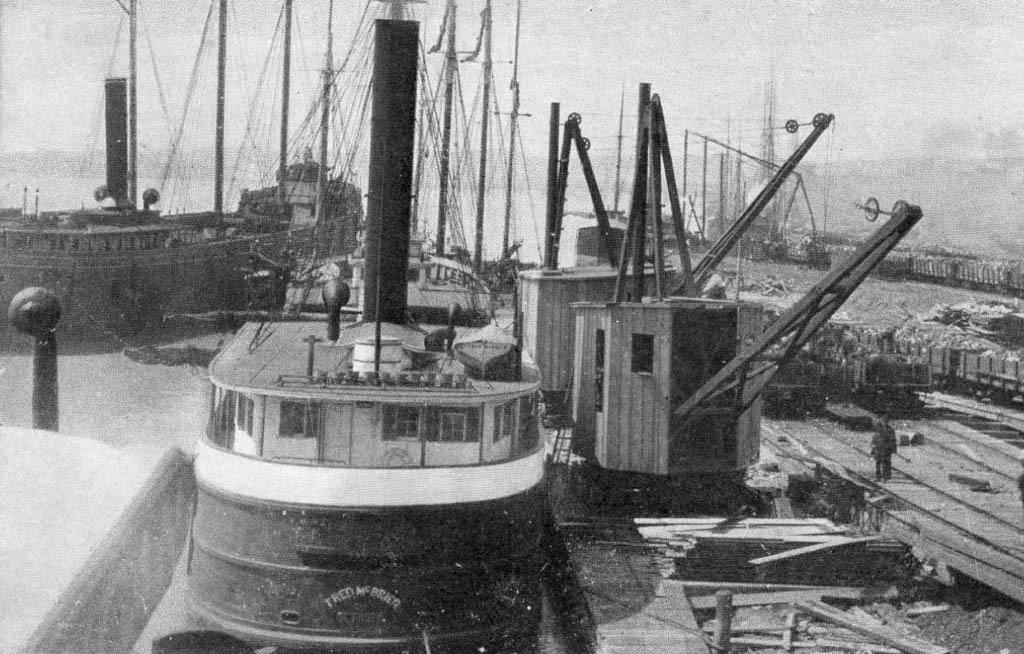On an October day in 1881, the Fred McBrier was westbound in the Straits of Mackinaw, towing the schooner-barges J.B. Lozen and A. Stewart. Because of the darkness and confusion over passing signals with the oncoming propeller Progress, a collision occurred, sending the McBrier to the bottom quickly but without loss of life.
In 1967, Jim Ryerse, a St. Ignace scuba diver, led a group that discovered the McBrier about 9 miles west of the Mackinac Bridge. The McBrier stands proudly upright underwater. The engine and boiler can be seen on her stern but decks have shifted to port and toward the bow. Small artifacts and mast sections are scattered about.
The Straits of Mackinac are a channel that connects Lakes Michigan (west) and Huron (east), forming an important waterway between Michigan’s Upper and Lower peninsulas. The straits are 4 miles (6 km) wide and approximately 30 miles (50 km) long, and include the passage between several islands in northwestern Lake Huron. They are spanned by the Mackinac Bridge (opened 1957) and underwater gas and oil pipelines. The straits, discovered by Jean Nicolet in 1634, played an important role in the fur trade and the defense of the upper Great Lakes and Canada.
The Straits of Mackinac Shipwreck Preserve was established by the state of Michigan in 1983 to protect underwater resources. The well-maintained preserve, which spans Lake Huron and Lake Michigan, currently has 12 buoyed shipwrecks, with many other marked sites closer to shore.







